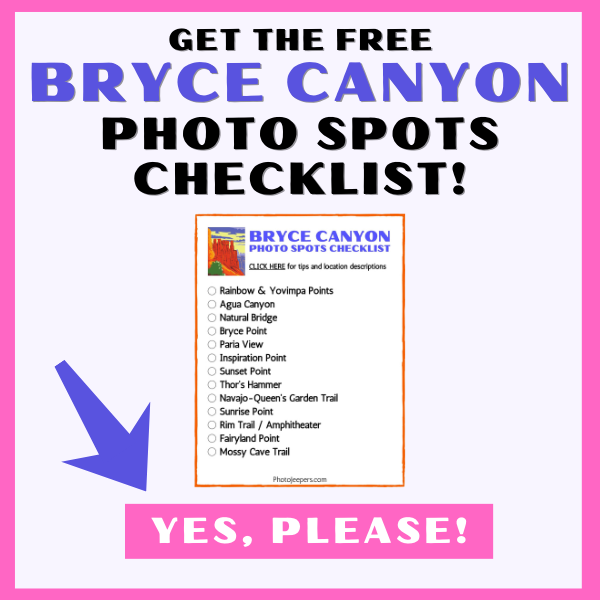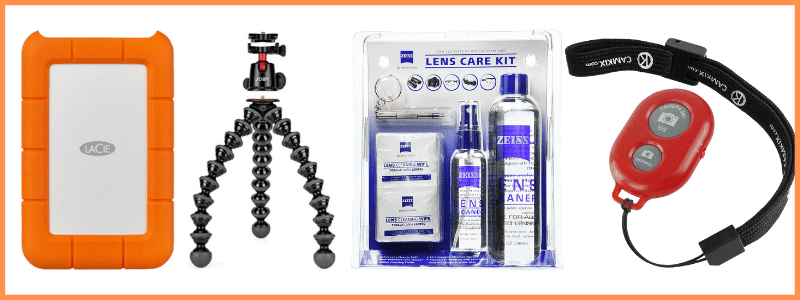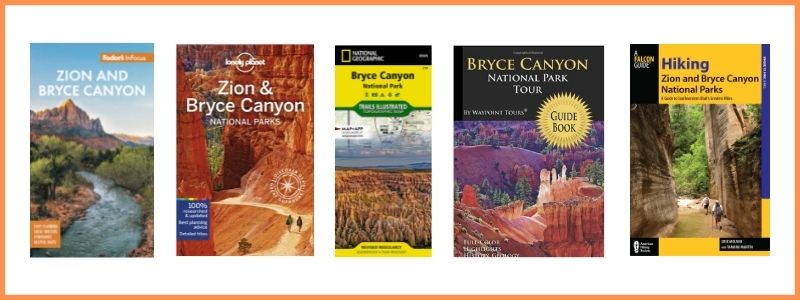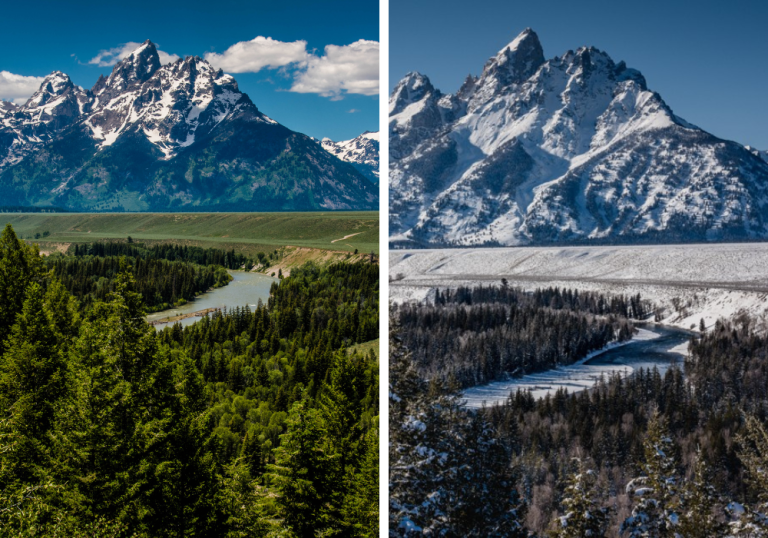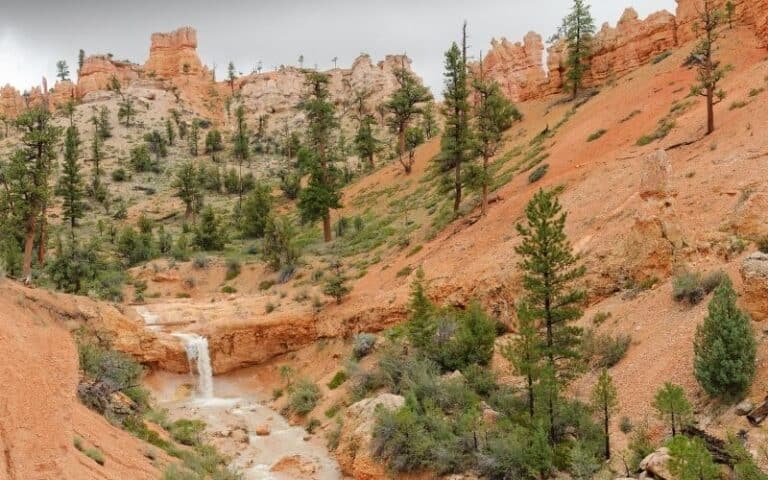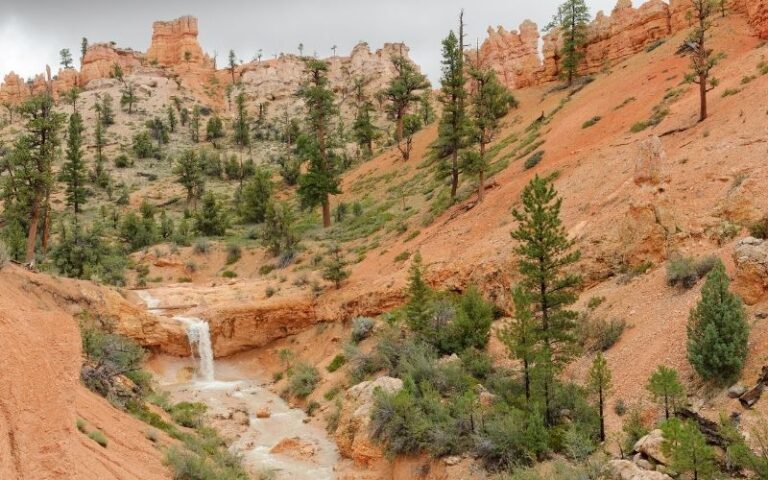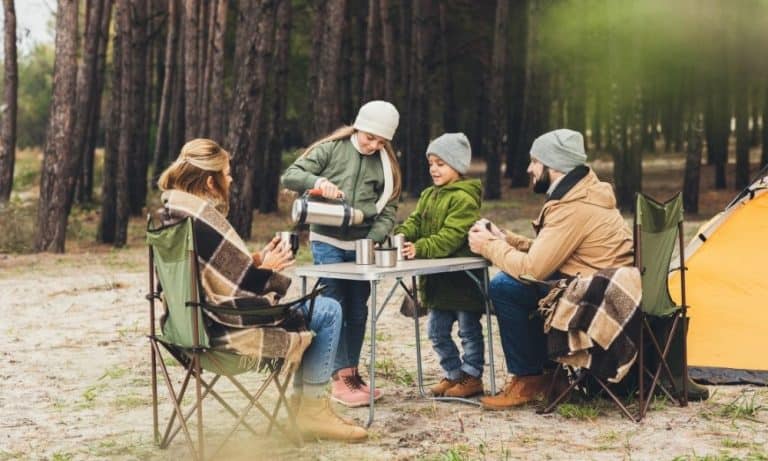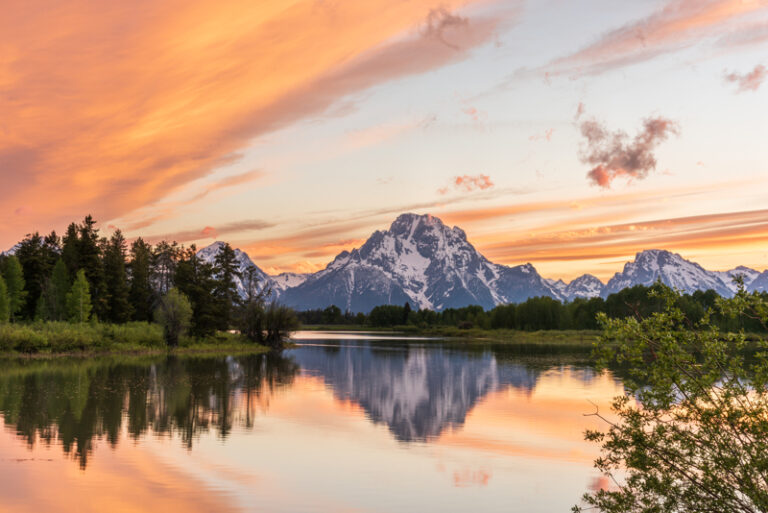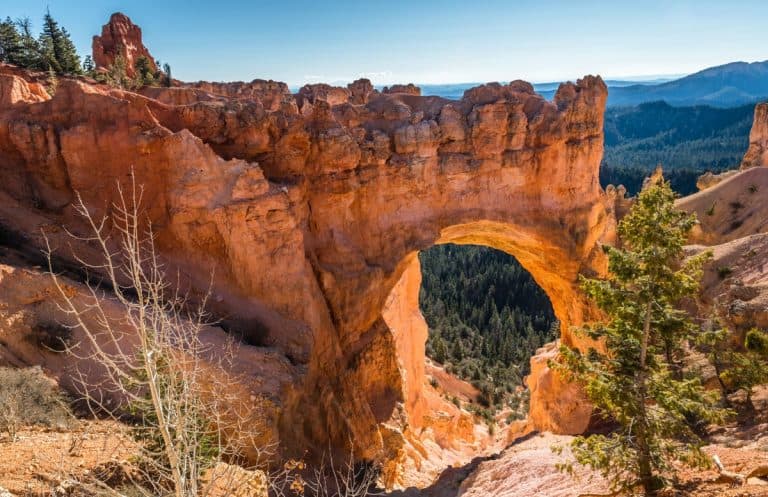List of the Best Bryce Canyon Photo Spots
When you see the stunning landscapes at Bryce Canyon, you’ll want to take pictures! We’ve created this list of the best Bryce Canyon photo spots to guide you through the park so you don’t miss anything!
Use this Bryce Canyon travel guide to plan your vacation itinerary: more things to do, what to pack, where to stay, and more!
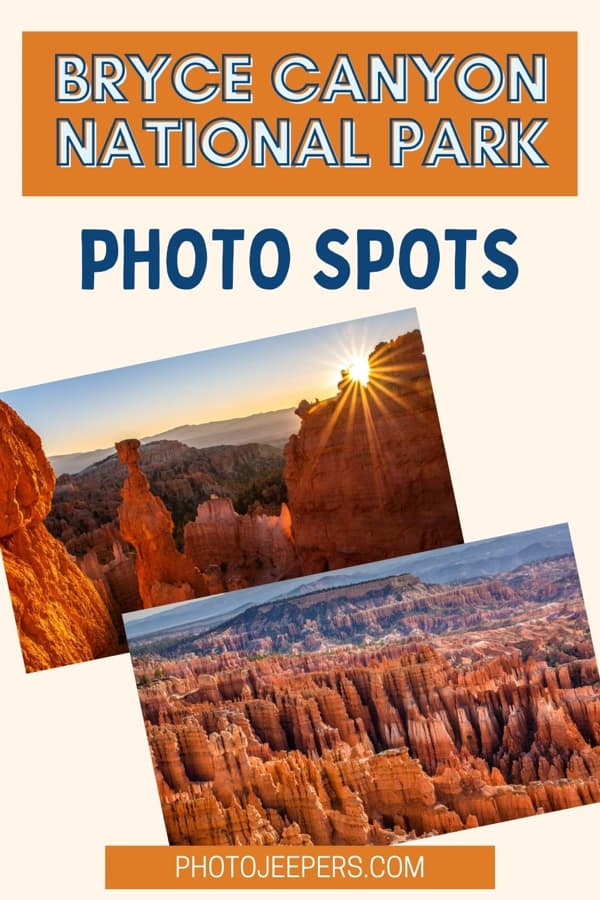
In this guide we share tips for taking pictures at Bryce Canyon and list the best photo spots for sunrise and sunset so you can take the most amazing pictures at Bryce Canyon.
This site contains affiliate links which means WE may receive commissions for purchases made through these links. We only provide links to products we actually use and/or wholeheartedly recommend! As an Amazon Associate, we earn from qualifying purchases. Read the full Disclosure Policy.
Camera Gear for Landscape Photography
- Tripod: take a look at these compact and lightweight travel tripods!
- Camera Bag: protect your camera from sand and water → We use Lowepro camera backpacks for outdoor photography.
- Neutral density filter: to compensate for variance of light you’ll need to use a neutral density filter. → Check out the Kase magnetic filters we use!
- Camera cleaning kit: remove dust or water that WILL get on your lens. NOTE: this is not for cleaning the sensor.
- Memory cards: purchase name brand memory cards since you’re trusting your images to the card! → We use Lexar and Sandisk!
- External hard drive: copy photos to a portable external hard drive ‘just in case’.
- Headlamp: use when taking sunrise and sunset photos!
Camera Gear at B&H Photo
A Photo Tour of Bryce Canyon National Park
Take a visual tour through Bryce Canyon National Park to see the stunning landscapes you’ll see when you visit!
Tips to Photograph Bryce Canyon
This guide will focus on the viewpoints and overlooks along the Bryce Canyon scenic drive, as well as spots along the rim trail in The Amphitheater.
But first there are important things to know about photographing and visiting Bryce Canyon National Park.
Stay Warm
Due to the elevation, it gets cold at night even when visiting Bryce Canyon National Park in the summer. The cold can drain camera batteries fast. Cover the camera when you are not using it or keep a spare set of batteries close to your body. Hand warmers and warm clothing layers are important to help keep you warm.
Stay Hydrated
Always carry water with you. We carry refillable water bottles in our camera bags. Also eat plenty of healthy snacks and food.
Sunrise Reflected Light
Bryce Canyon sunrise photography is an amazing time to catch the glow and reflected light on the hoodoos. Keep in mind that as the sun rises higher in the sky, the landscape become washed out.
Watch for reflected light on the hoodoos, fins, windows and trees in the canyon. Be creative with composition by taking pictures through rock holes, tunnels, windows and between cliffs. Unusually shaped frames can add drama to the shot.
Afternoon and Sunset
Long shadows are cast into the canyon beginning late afternoon as the sun sets and light is only apparent on the tops of the hoodoos. Concentrate on any side-lighting of the hoodoos that aren’t in shadow.
If there are clouds in the sky, they may bounce light into the canyon to help reduce the shadows. Otherwise, the big vistas provide wonderful telephoto shots from any viewpoint in the amphitheater during sunset.
Bryce Canyon Photo Spots Map
Use this map of Bryce Canyon photo spots to navigate through the park to each location!
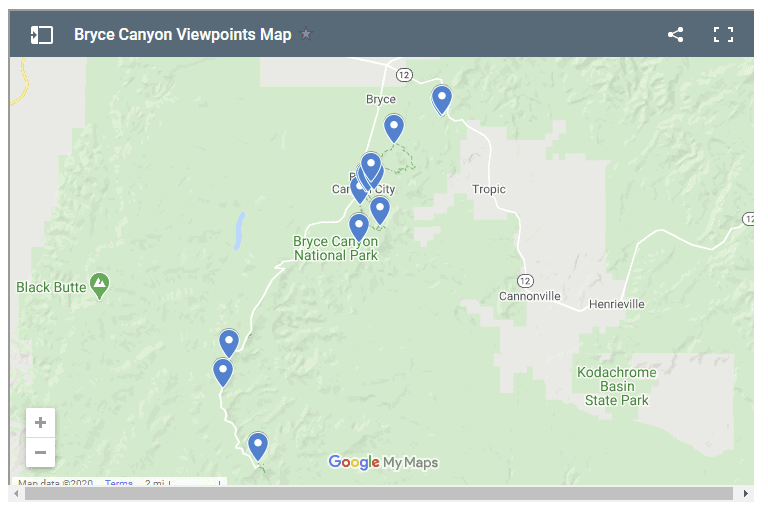
Best Bryce Canyon Photo Spots
This guide will start at Rainbow Point, 18 miles beyond the entrance to the park. We’ll share photos and tips for the overlooks along the Bryce Canyon scenic drive.
As you drive from Rainbow Point back to the Amphitheater, all the Bryce Canyon views and photo spots will be on the right so you can avoid left turns on the busy road.
Rainbow & Yovimpa Points
The park road ends when it reaches the combined parking area for Rainbow Point and Yovimpa Point.
Rainbow Point: you can see the colorful hoodoos in Rainbow Canyon and views of theTable Cliff Plateau. There’s a short trail, Bristlecone Loop, that leads to an 1,800-year-old bristlecone pine, believed to be one of the oldest living things at Bryce Canyon.
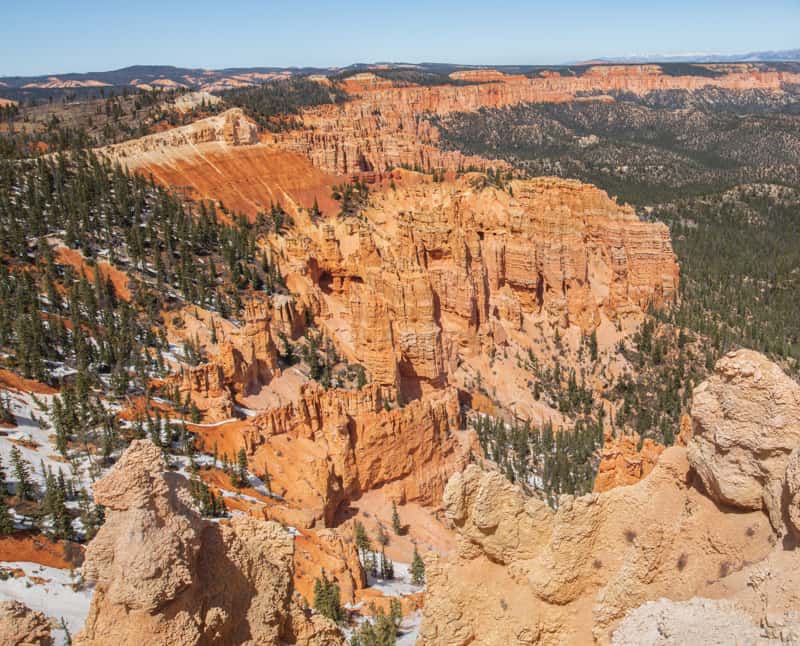
Yovimpa Point: magnificent viewpoint looking south and west over the Grand Staircase-Escalante National Monument. It is one of the best spots to see the “steps” which give the Grand Staircase its name.
BEST TIME TO PHOTOGRAPH: The light in the southern end of the park around Rainbow Point is wonderful from mid afternoon through sunset.
Agua Canyon
Agua Canyon is a fun photo spot at Bryce Canyon to see two prominent hoodoos at this overlook.
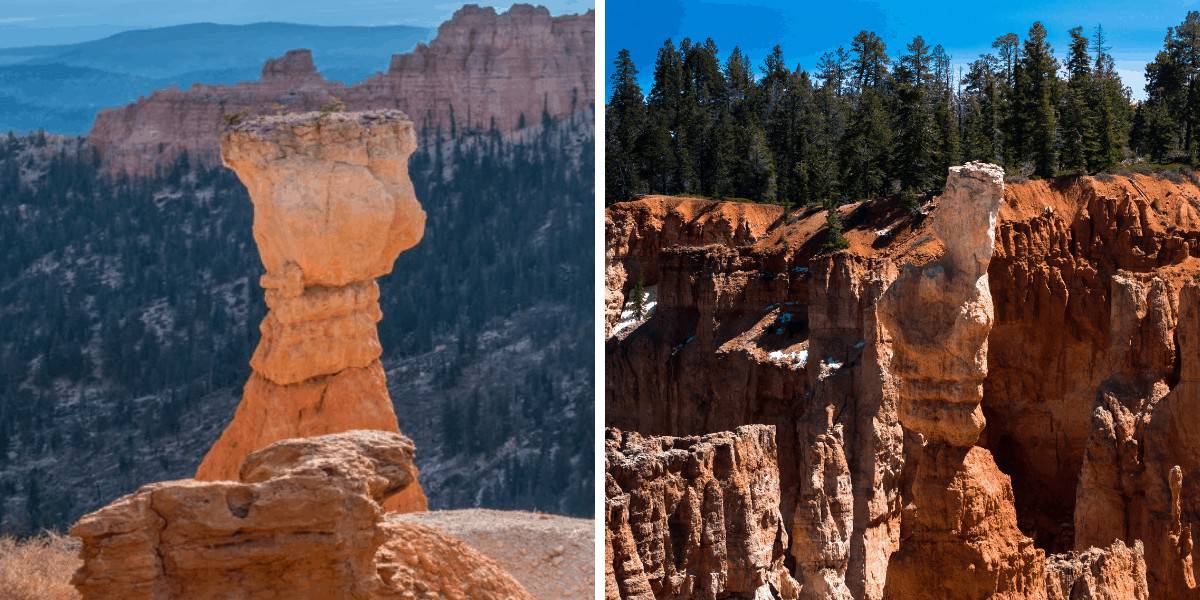
Look for ‘The Hunter” and “The Rabbit”. The Hunter has a hat of evergreens and is easily seen just in front of the viewpoint. To the right is a smaller hoodoo commonly referred to as The Rabbit (the The Hunter’s prey).
BEST TIME TO PHOTOGRAPH: The hoodoos and fins at Agua Canyon are especially dramatic in early morning light.
Natural Bridge
The structure called Natural Bridge is technically an arch. It started as a small ice window in a large prominent fin then eroded over time. Natural Bridge is a popular Bryce Canyon photo spot.
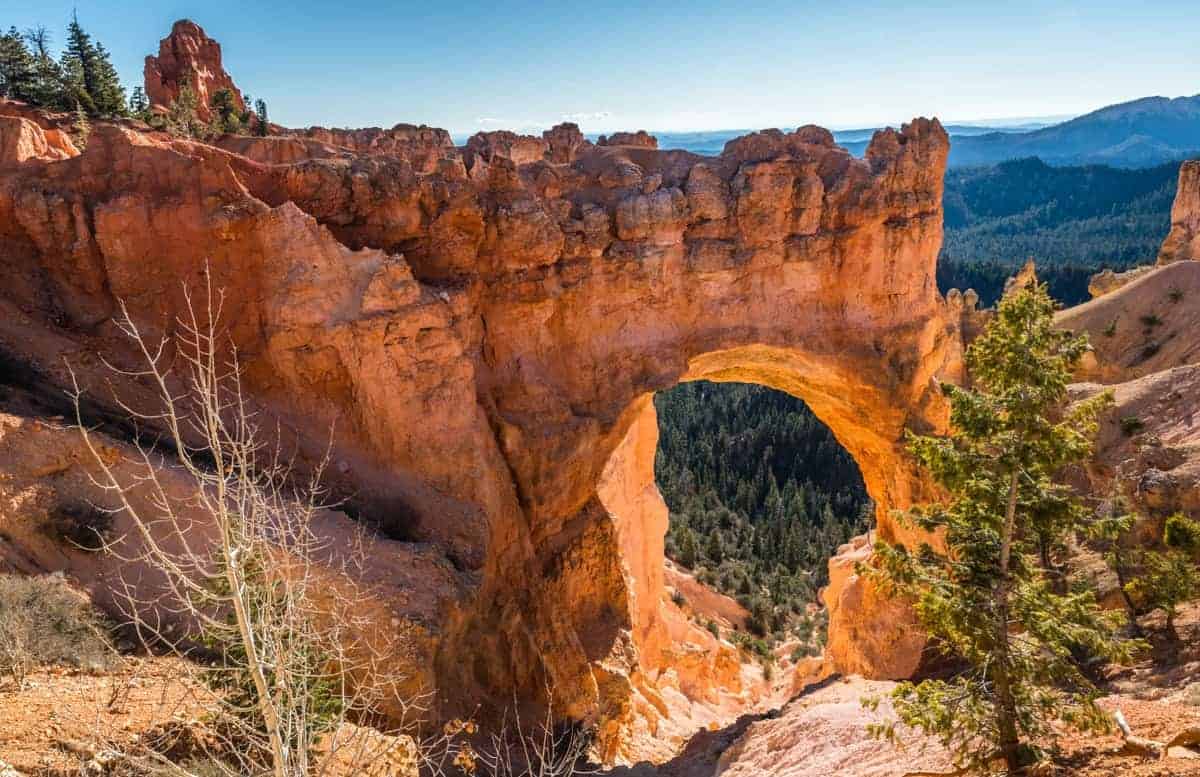
You can photograph Natural Bridge from many vantage points, but follow the signs and stay behind the railing. Be sure to take one photo that frames the green Ponderosa pine trees through the arch.
BEST TIME TO PHOTOGRAPH: Natural Bridge is best photographed mid-morning when the sun is high enough in the sky that it nicely illuminates the features around the arch and bounces ample light onto the underside.
Bryce Point
Bryce Point is named for Ebenezer Bryce, who settled the area in 1870. Due to its elevation at 8,300 feet, Bryce Point offers one of the most scenic vistas of the hoodoo-filled red rock amphitheater.
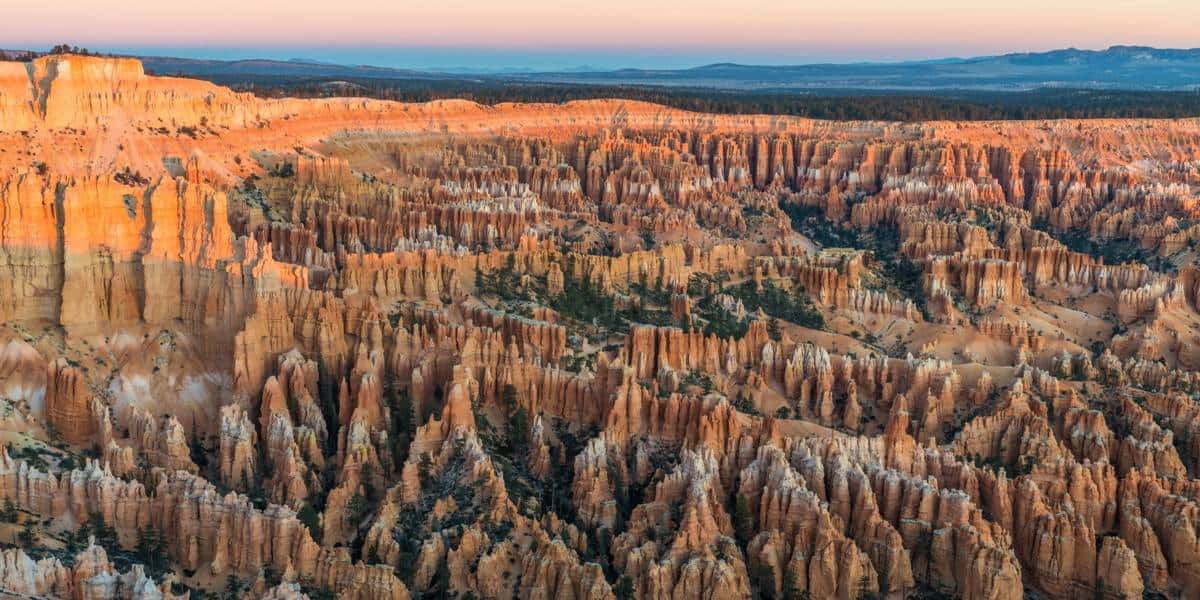
Bryce Point is our favorite Bryce Canyon sunrise photography spot to catch the tops of the hoodoos glowing with a brilliant burst of light. You can photograph the sun crossing the horizon to the west as well as the hoodoos and Boat Mesa to the north.
BEST TIME TO PHOTOGRAPH: Photographing the sunrise at Bryce Point provides an amazing view to capture the light sweeping across the amphitheater.
Paria View
Bryce Canyon isn’t known for sunset photography. The hoodoos in the amphitheater area are in total shade as the sun sets.
But the Paria View is a good photo spot at sunset since the hoodoos here face the west and catch the golden light as the sun goes down.
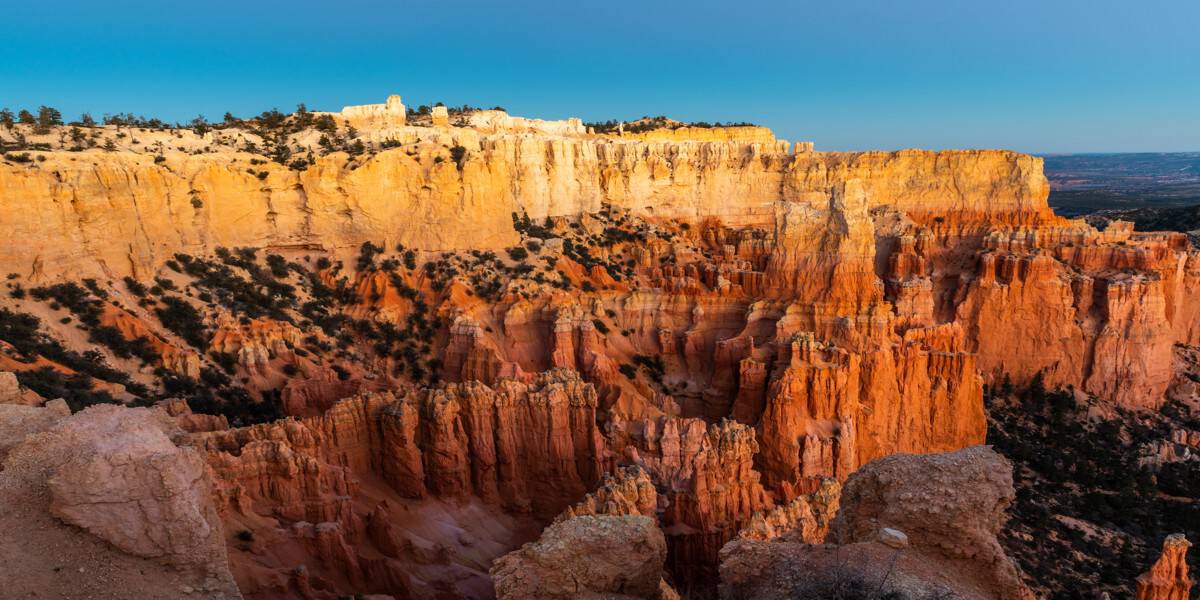
BEST TIME TO PHOTOGRAPH: Our best sunset photography tip: keep taking pictures after the sun sets. You can capture the glow of the hoodoos during the soft light of blue hour.
Inspiration Point
The view from Inspiration Point is spectacular to capture Bryce Canyon photos. The light creates glowing reds, oranges and pinks around the fins, spires and hoodoos.
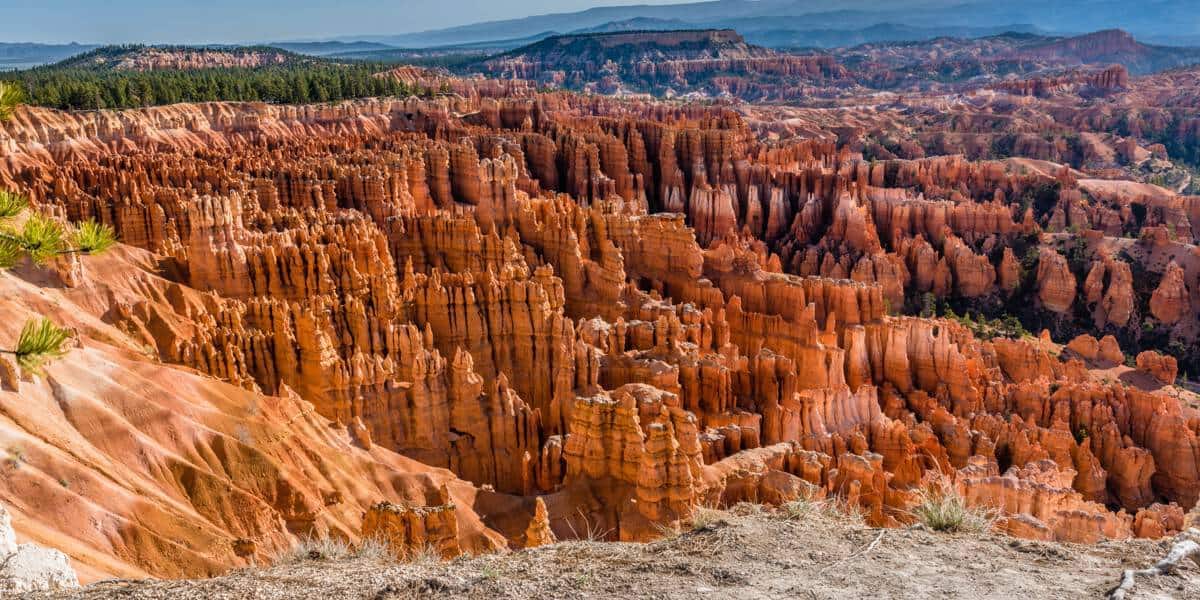
Panoramic view are everywhere, but don’t forget to zoom in an photograph smaller sections of the hoodoos to create an image with immediate impact.
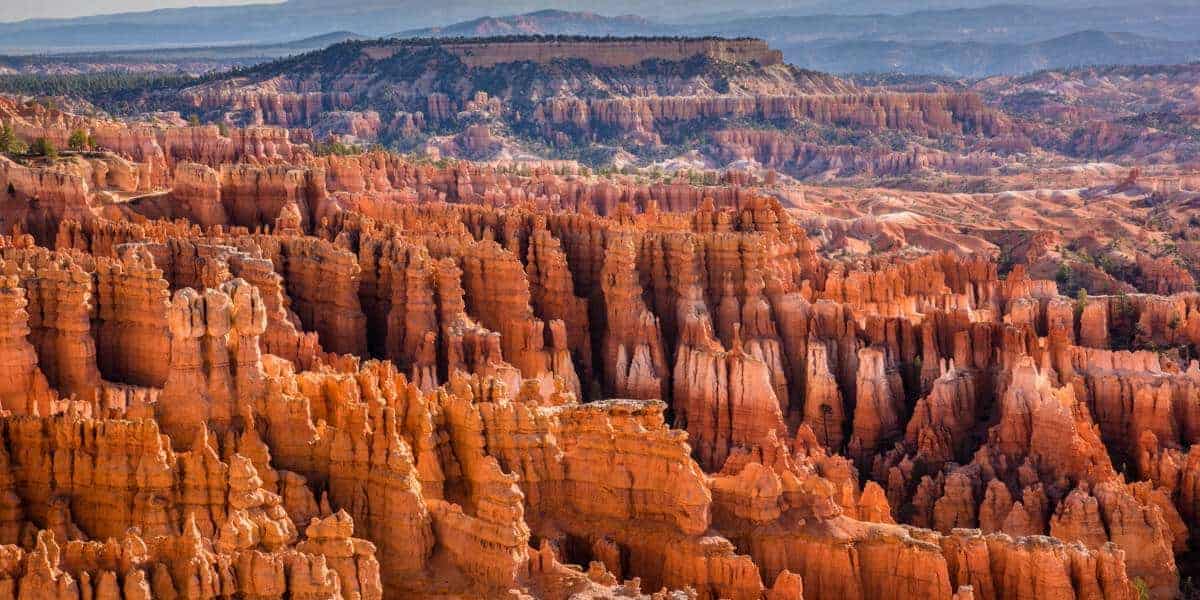
This is a good area to walk along the Rim Trail to find other views to photograph. Use caution when walking along the edges. The cliffs of Inspiration Point are exceptionally dangerous as they are formed of crumbly rock, slippery slopes and sheer drop-offs. All visitors are strongly cautioned to remain on trails and behind railings.
BEST TIME TO PHOTOGRAPH: Inspiration Point is a good location to take photos of Bryce Canyon at sunrise and during the early morning.
Sunset Point
Sunset Point is actually not a good Bryce Canyon photo spot for sunset photography. At this viewpoint you’ll see the light on the hoodoos as the sun rises, creating stunning Bryce Canyon photos.
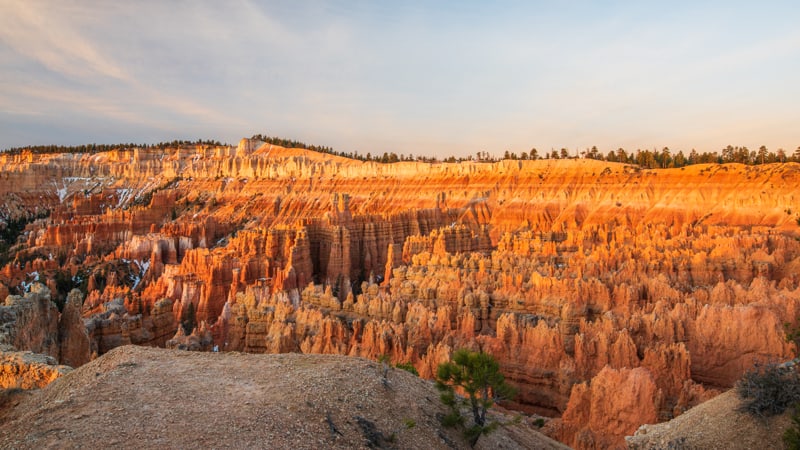
You’ll also see the Silent City here. It’s a maze of hoodoos and fins packed in close proximity directly below the point and to the south.
Just below the overlook you’ll see the Navajo Loop trail descending into the famous Wall Street. You’ll also see the iconic Thor’s Hammer.
BEST TIME TO PHOTOGRAPH: Sunset Point is amazing at sunrise and early morning to capture the reflected light on the hoodoos.
Thor’s Hammer
Every Bryce Canyon Photography Guide will include Thor’s Hammer, one of the most well-known formations in the park. This famous hoodoo is one of the most spectacular Bryce Canyon photo spots. It can be found just below the Sunset Point overlook on the northern edge.
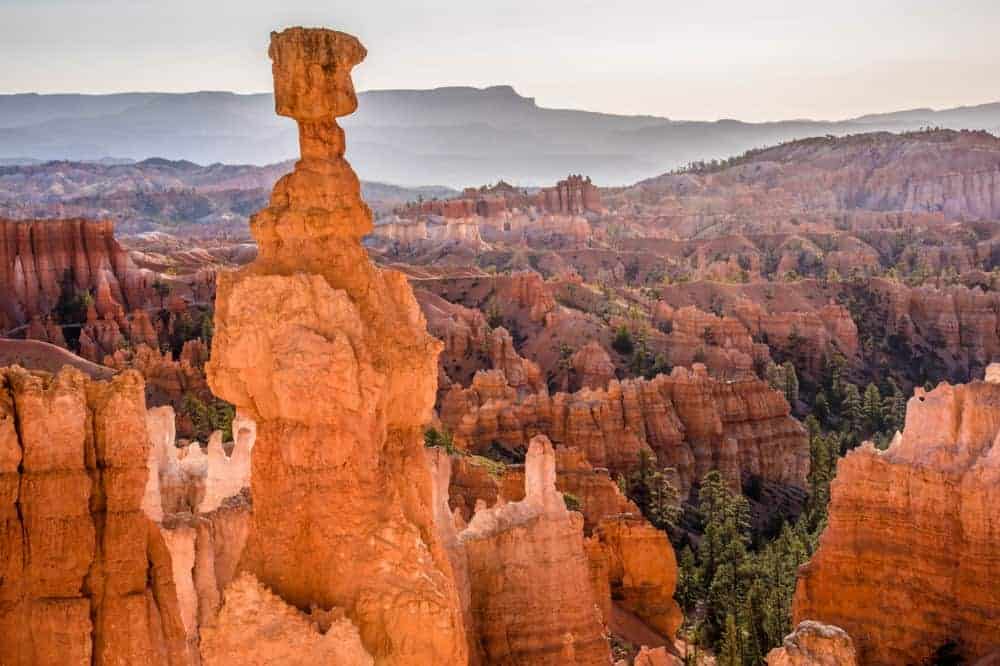
Thor’s Hammer is isolated from other hoodoos and provides a striking contrast to the natural landscape. We recommend walking down the Navajo Loop Queen’s Garden trail far enough to get that up-close view and photo of Thor’s Hammer.
BEST TIME TO PHOTOGRAPH: Sunrise and morning are amazing times to get that glow on Thor’s Hammer.
Navajo Loop Trail
The Bryce Canyon views overlooking the Amphitheater along the Rim Trail are spectacular. But getting close to the hoodoos and windows up close is something you should do if you can!
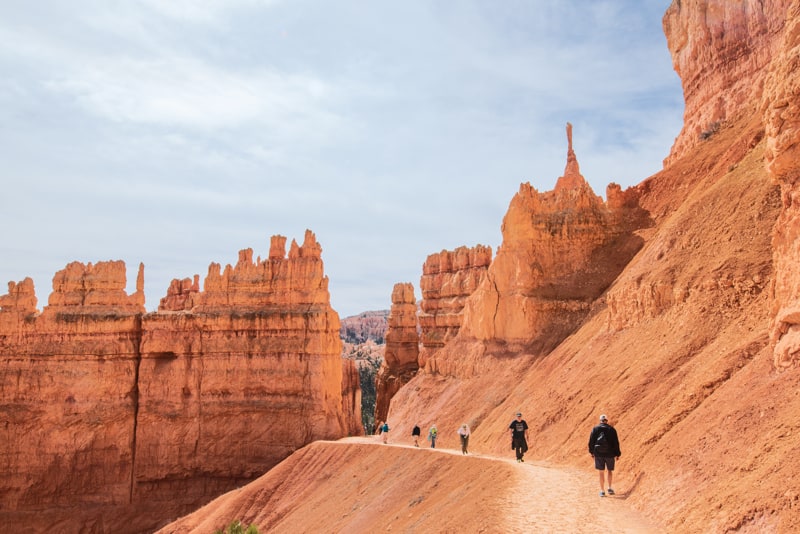
You don’t need to walk the entire trail, just far enough to see Thor’s Hammer and the windows just below Sunset Point.
Remember that going DOWN the trails to the bottom of the canyon is easy, but hiking back UP is tiring!
We recommend hiking the Navajo Loop – Queen’s Garden trail, starting at Sunset Point and ending at Sunrise Point.
BEST TIME TO PHOTOGRAPH: Sunrise and morning are good times to photograph the landscapes along the trail.
Sunrise Point
Sunrise Point is another good sunrise photo spot at Bryce Canyon. You’ll catch the early morning glow on the red rock hoodoos.
Just below this overlook, and down the Queen’s Garden Trail a bit, you’ll see unique landscapes to photograph.
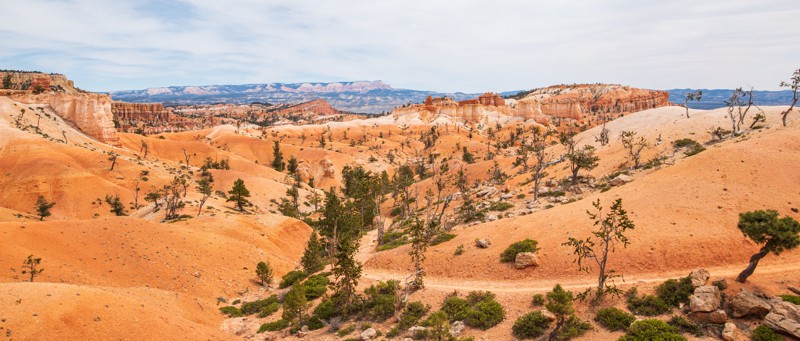
We also recommend you walk along the Rim Trail near the viewpoint to get different views of the amphitheater and hoodoos.
BEST TIME TO PHOTOGRAPH: Sunrise and morning are best from this viewpoint and along the Rim Trail.
Bryce Canyon Amphitheater in the Winter
Bryce Canyon in the winter is amazing to photograph the contrast of the red/orange hoodoos against the white snow.
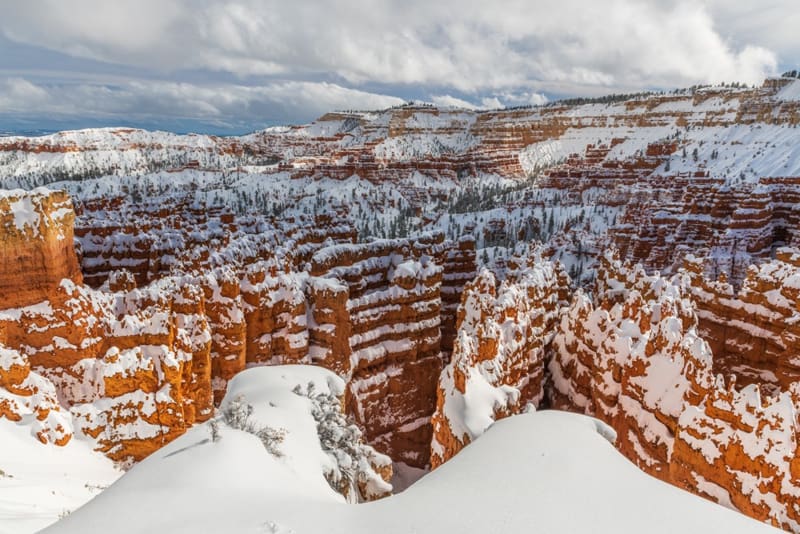
To capture amazing Bryce Canyon winter photos, be prepared for cold temperatures by wearing winter clothing for outdoor photography.
You could also encounter snow-covered walkways and the possibility of road closures beyond the amphitheater depending on weather and road conditions.
Know in advance what to expect when visiting Bryce Canyon in the winter!
Fairyland Point
Fairyland Point is a fabulous location to photograph the glow on the hoodoos in the morning light. Walk along the Fairyland Trail a bit to get various perspectives of the hoodoos here.
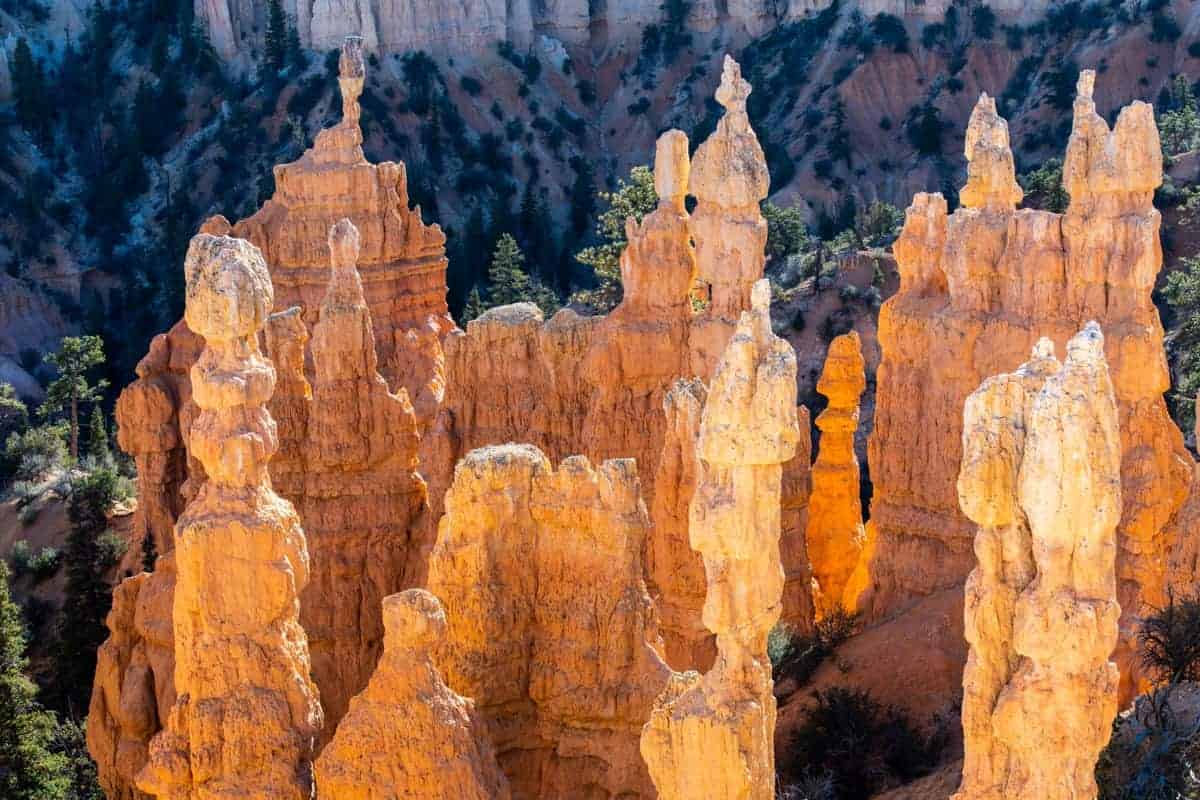
BEST TIME TO PHOTOGRAPH: Morning is a good time to visit Fairlyand Point. You’ll have good parking, and the hoodoos glow in morning light.
Mossy Cave Trail
The Mossy Cave trail is part of Bryce Canyon, but it’s outside the park’s entrance along Highway 12. It’s definitely a photo spot you’ll want to see!
The actual “mossy cave” is a cool alcove that’s sheltered where ice from the winter remains intact well into June.
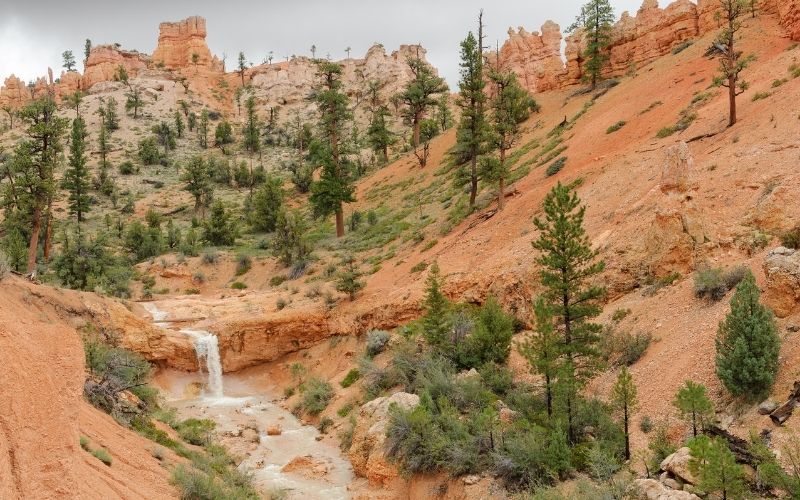
But the main attraction for photographers is the small waterfall along the stream that’s called the Tropic Ditch. You can hike right to the waterfall. If you’re visiting Bryce Canyon National Park in the summer this is a great place to cool of and let the kids play in the river.
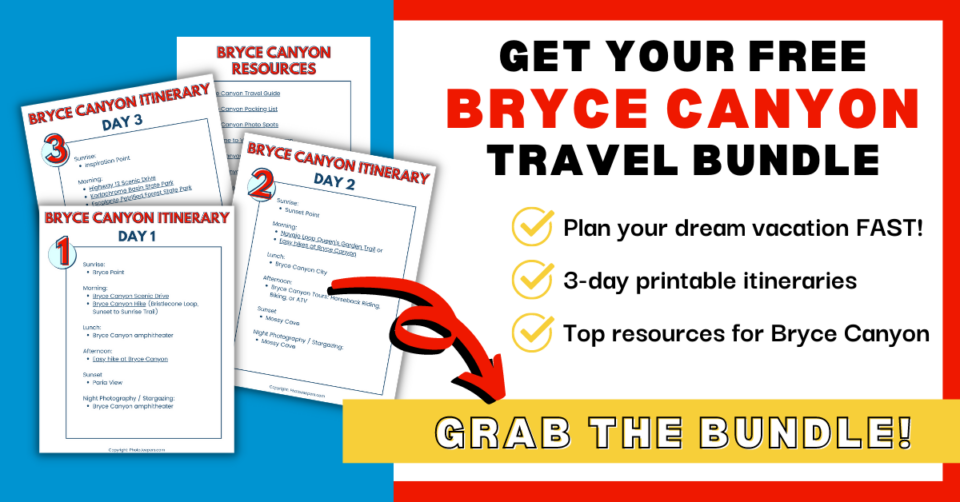
Bryce Canyon Itineraries
We’ve put together our favorite Bryce Canyon National Park Itineraries for 1, 2, or 3 days in the park! Grab a free copy by clicking the graphic below. Click on the links to read the detailed itinerary for Bryce Canyon based on the time you have to spend at the park!
- Bryce Canyon National Park One Day Itinerary
- Two days in Bryce Canyon National Park
- Three Days in Bryce Canyon National Park
Plan Your Bryce Canyon Vacation
- Visiting Bryce Canyon National Park
- Bryce Canyon Packing List
- Things to Do at Bryce Canyon National Park
- Bryce Canyon Photo Spots
- Best Time to Visit Bryce Canyon
- Bryce Canyon Tours
Where to Stay Near Bryce Canyon:
- Bryce Canyon Places to Stay
- Bryce Canyon Hotels
- Bryce Canyon Winter Lodging
- Bryce Canyon National Park Camping
- Bryce Canyon National Park RV Vacation
- Vacation Rentals Near Bryce Canyon
- Best Western Ruby’s Inn – easy access right outside the park
- Best Western Plus – also right outside the park
Check Amazon for: Bryce Canyon Guides and Maps

